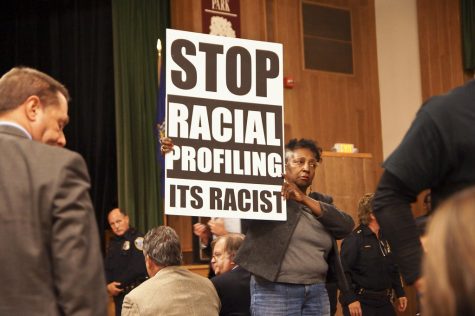The Horrible Practice of Racial Profiling In America

Photo credit: Steven Depolo
March 5, 2021
Racial profiling: the use of race or ethnicity as grounds for suspecting someone of having committed an offense. In America, we all racially profile about ten people minimum per day.
The year 2021 marked 24 years since the first piece of suggested legislation on racial discrimination: the Traffic Stops Statistics Act of 1997. This bill, passed unanimously in March 1998 by the US House of Representatives, was the first effort by any legislative body to deal with what had become known as “racial profiling,” the police practice of stopping Black and brown drivers in disproportionate numbers for traffic violations in attempts to prosecute other crimes for which there was no police proof.
The strategy, used to target drug interdiction evidence around the country on highways and interstates, had existed for years. But it came to more significant public notice in the early and mid-1990s, with the filing of court complaints against New Jersey and Maryland’s state police forces.
With the bill’s passage in the House, the law enforcement groups, who had previously taken no notice of the bill, announced their opposition. At the beginning of the Clinton impeachment trials, the bill never advanced in the Senate and did not pass. But the Act had a more significant effect: several states enacted anti-racial discrimination legislation within the next few years, and a more stringent bill, the End Racial Profiling Act (ERPA), was implemented in every subsequent Congress over the decade.
There are countless more that do not include the police in any item that hits the news: Black customers who are pursued too closely by employees of the store; Muslims and Hispanic students who are asked if they’re really American.
In April of 2018, a golf course owner called the police on an African-American because they played too slowly. A mother called the police because she was made “nervous.” by two Native American students, and a white student at Yale called the police because a black student napped in a dorm building.
High rates of chronic hurdles are faced by minority groups who face daily discrimination. Even though they have identical credit records, Black, Latino, and Asian consumers paid higher vehicle interest rates than whites.

The critical problems that need to be discussed when it comes to the treatment of individuals and suspects are racial profiling, sexism, intimidation, and unnecessary force. Racial profiling also results in devastating results, as we saw with Eric Garner, who, after being contained in a chokehold, succumbed to death due to compressions of his chest and neck. Such procedures also lead to unreasonable searches and stops, bullying and abuse, and police mistrust.
As a result, engaging with the community in the war against crime is becoming more difficult for the police. It is up to the national government to develop robust policies and laws to regulate police officers’ actions to resolve all these problems. Police officers, therefore, need extensive instruction in how individuals and criminals should be treated.



